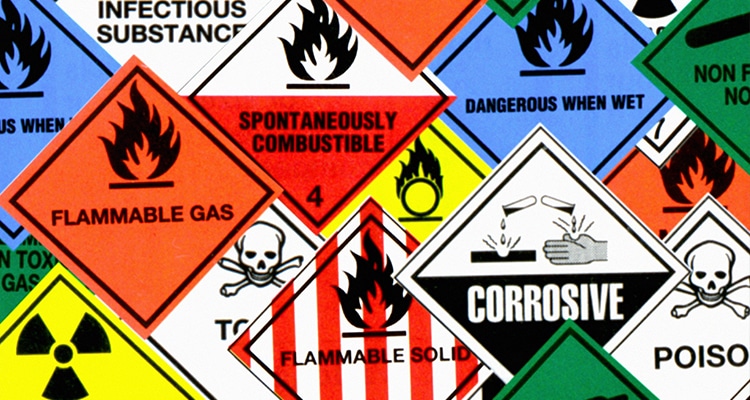Last month, we focused on OSHA’s Hazard Communication Standard (HCS), particularly its requirements for companies to create and maintain accessible Safety Data Sheets (formerly known as Material Safety Data Sheets or MSDSs). This month, we are taking a closer look at another aspect of the Hazard Communication Standard: The Hazardous Material Inventory requirement.
Specifically, OSHA says the Hazard Communication Standard must include, “A list of the hazardous chemicals known to be present using a product identifier that is referenced on the appropriate safety data sheet (the list may be compiled for the workplace as a whole or for individual work areas).” (29 CFR 1910.1200(e)(1)(i))
Outlining the hazardous chemicals present in a facility in an inventory helps ensure workers have the information they need quickly and easily. This information can also be used by first responders in an emergency. Additionally, having this information accessible and organized helps with waste tracking and reporting.
The Hazardous Material Inventory must include all hazardous chemicals at a facility, even those that are stored and not in use. The HCS classifies any chemical that could be a physical or health hazard as hazardous. The chemical manufacturer will determine which chemicals are considered hazards, so you will know which ones you must list in your inventory.
The inventory must list each hazardous chemical in your facility by the name listed on its corresponding Safety Data Sheet (SDS). This is often the common name of the chemical or product. This name must also be consistent with the one listed on its label (refer to last month’s article for details about these data sheets and labels). The inventory list should indicate if the SDS is on file and should also list the manufacturer’s name, address, and phone number.
The inventory does not need to include the specific hazards of each chemical because these are indicated on the SDS and labels, and hazard-specific training that covers them is required through the HCS for employees.
The inventory list may be specific to the work area where it will be utilized, allowing it to be useful for an individual facility or even a specific workplace. The required elements mentioned above are minimum requirements, but your inventory may include more information that is helpful for your specific work area or facility. Your main office should also keep a master list of each inventory.
To make compliance with these requirements simple, Chemical Safety Software provides a Chemical Inventory Management system that tracks chemicals in your facility from delivery to disposal. The system not only helps with the inventory requirement but also streamlines compliance with the HCS Safety Data Sheet and labeling requirements. The inventory management system will track containers, generate a barcoding system, access SDSs from chemical manufacturers, print the required HCS labels, and create customized chemical inventory reports for your facility. This system keeps your facility in compliance with each element of the Hazard Communication Standard and ensures that records of your facility’s hazardous chemicals are easy to access and update in the future.
Check back for next month’s article, where we will focus on another aspect of hazardous chemical management: The Department of Transportation’s HazMat shipping requirements.



